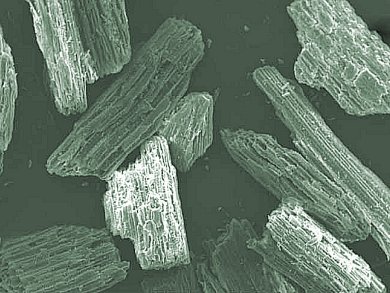Jale Yanik and colleagues, Ege University, Izmir, Turkey, used neutral Oreganum onites L. stalks and such chemically modified with HNO3 and H3PO4 as an adsorbent for removal of acidic and basic dyes from waters. Turkey is one of the world’s largest suppliers of the aromatic and medical plant, oregano. Oreganum stalks (OSs) are abundant agricultural wastes from the harvest of Oreganum. Their accumulation around fields creates big problems.
Synthetic dyes which are extensively used in dyeing paper, plastics, textile, food and cosmetics products, etc., and which are designed to be resistant to environmental conditions such as light, pH, and microbial attacks cause microtoxicity to aquatic life and slow down self-purification of streams by reducing light penetration, even in low concentrations. They also pose a health problem because they may be mutagenic and carcinogenic.
The team showed that OSs could be potentially used as a low cost adsorbent for basic dyes like Basic Red 18 and methylene blue, and also acidic dyes like Acid Red 111. The chemical modification of the OSs with HNO3 and H3PO4 increased its adsorption capacity for basic dyes due to increased accessibility of some of the functional groups on the surface of the adsorbent. OSs modified with HNO3 are suitable adsorbents of Acid Red 111 from aqueous solutions.
The team found that most effective factors in the adsorption of basic dyes are surface charge and acidic groups on biosorbents. Non-electrostatic forces as well as electrostatic forces are most effective in the adsorption of acidic dyes.
- Oreganum Stalks as a New Biosorbent to Remove Textile Dyes from Aqueous Solution,
Ebru Mavioglu Ayan, Pelin Secim, Serhat Karakaya, Jale Yanik,
Clean Soil Air Water 2012, 40 (8), 856-863.
DOI: 10.1002/clen.201100153




